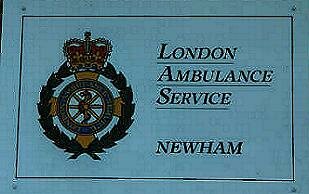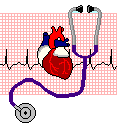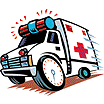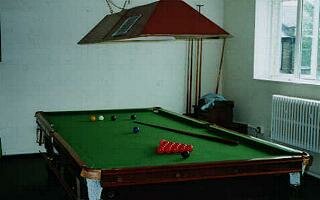|
|

|
| intheteam | |
Find Club | |
Help | LA MEDICS |
K1 Newham Station    Tom The station Cat Tom The station Cat      
Newham Ambulance Station is the main station part of the complex which includes West Ham and Poplar. 


Newham runs a fleet of 12 vehicles 24 hours a day 365 days a year, we have 6 early turn ambulances, 4 late turn and 2 night vehicles. 2 sector support vehicles now operate monday night thru friday night, and a RRU (rapid response unit) 8am till 12am 7 days 34 staff man the vehicles who work on 17 week rotas, which consist of 18 Paramedics and 16 Technicians. We also have 30 relief staff, which cover the 3 stations. 
The London Ambulance Service NHS Trust is the largest ambulance service in the world. It is an integral part of the National Health Service, having transferred to the NHS from local government in 1974. In April 1996, the service achieved Trust status. The LAS serves more than seven million people who live and work in the 610 square miles of Greater London. The Service is made up of the Accident and Emergency Service, Central Ambulance Control, the Patient Transport Service, Patient Transport Control, management and support services. The LAS has 70 ambulance stations grouped in three operational divisions, covering North, South and Central London. It has over 3,000 staff, of which approximately 2,000 are engaged in accident and emergency work, or in training. Of these, around 650 are trained paramedics. We aim to have a paramedic on every vehicle as soon as possible. THE ACCIDENT AND EMERGENCY SERVICE The Accident and Emergency Service is co-ordinated from a single control room at London Ambulance Service Headquarters in Waterloo Road (near Waterloo Station). All "999" calls for ambulance services in Greater London are routed through this Control Room, and calls normally average 2,600 a day. This can rise to 3,500 calls per day at peak times, such as New Yearís day. In addition we receive urgent calls from family doctors who require an ambulance to take a patient to hospital for admission. Every call is treated as urgent, although some calls require only treatment at the scene of the accident rather than at hospital. Ambulance Control staff work round the clock to answer all calls. In terms of A&E work, the LAS is twice as busy as any other English ambulance service: Greater Manchester and West Midlands have about half its workload, Mersey about 45% and West Yorkshire about 35%. When a "999" call is received, a Control Assistant takes down details of the call on computer, including the time and location, and a printout of these details is passed to the officer in charge of allocating calls to vehicles. A Radio Operator sitting nearby will then radio direct to the ambulance, or if the crew is on station a direct-line call will be made to the ambulance station. The crew then proceeds to the incident as quickly as possible. This is often made extremely difficult by the congested traffic on Londonís streets, and the blue lights and siren can often be essential in helping them to get to their destination quickly. In nine out of ten "emergency" calls, the ambulance crew will not be called upon to deal with a truly life-threatening situation, but because they never know which call will prove to be a real emergency they must respond to all calls as if they were a matter of life and death. All crews on the Accident and Emergency service are qualified to deal with any kind of emergency and every ambulance has the essential equipment to ensure that once the crew arrives at an incident a patient can be sure of swift, expert attention. After giving any necessary aid, the crew transports the patient to the nearest hospital accident and emergency department and does not leave until the casualty has been seen by one of the hospital staff. Apart from receiving calls from the general public, Central Ambulance Control also receives "urgent" calls from family doctors that require patients to be taken to hospital within a specified time limit, usually one hour. The Service has a Major Incident Plan, which is implemented in conjunction with other emergency services, and is designed to produce as much support as possible while maintaining adequate services throughout the rest of the Capital. Below you will find some pictures of the station and the staff, to give you an insight of what goes on within NEWHAM. 
In between calls we try to relax, which is not very often.  
|
||||||
|
|
|
|||||